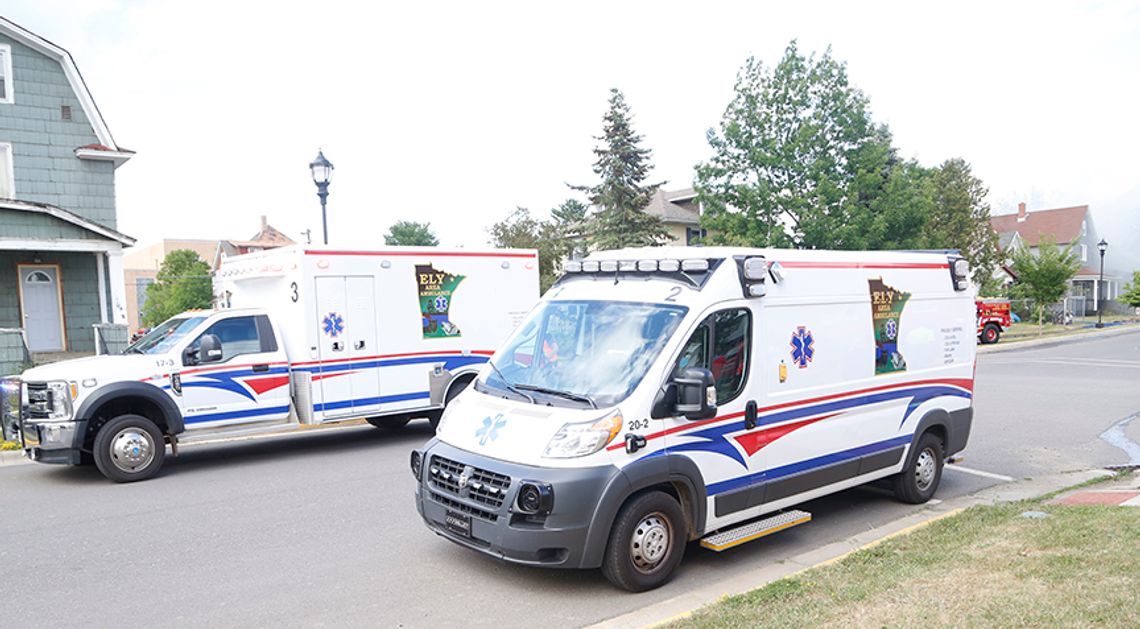Ely city officials are looking to kickstart discussions over a proposal that would bring major changes to area ambulance operations.
Council members voted this week to set up an Aug. 26 study session and invite leaders of neighboring units of government and other key principals to the table.
At issue is a June 13 recommendation, made by SafeTech Solutions, that ambulance operations be taken over by Ely-Bloomenson Community Hospital.
Since the recommendation was offered at a public meeting convened by EBCH, there has been little in the way of public discussion or progress.
Ely council member Al Forsman suggested the study session as a way to bring the parties back together.
“The presentation was put forth by the hospital on what SafeTech Solutions had discovered and it would be nice to get together and to get people on the record of where they stand on this,” said Forsman.
Forsman also said that Ely council members should offer their thoughts.
“I would really like the council to voice their opinions on this,” said Forsman. “I’m on the board representing the council but I can’t speak for you so I would like to know what your feelings are. I would like to find out where everybody is.”
A June meeting of the area ambulance joint powers board, held in the wake of the public meeting where the recommendation was made, yielded little response and representatives said then they needed more time to address the proposal.
“Since the presentation, this has kind of stalled out,” said Forsman. “It would be nice to know why or why not people would want to adopt that.”
SafeTech pointed to Medicare reimbursement rate rules in pressing for EBCH to take over an ambulance operation it gave up in the late-2000s.
Medicare reimbursements under the current structure can be as small as 30 cents on the dollar and encompass up to two-thirds of the runs made by area ambulance services, but those reimbursements climb to as much as 101 percent should billing originate from a critical access hospital such as EBCH.
That makes a world of difference in financial models, including one calling for as many as four fully-staffed ambulances in the Ely, Babbitt, and Tower areas and an operation with more than 30 full-time personnel should the service return to hospital ownership.
Currently, the non-profit Ely Area Ambulance Service provides ambulance service in Ely, although it has encountered financial difficulties over the last yearand- a-half and was on the brink of insolvency before local governments stepped up with an infusion of cash.
Legislation passed this year will provide more than $260,000 in additional funding for the Ely service, but state lawmakers have called the assistance a “band-aid” while pressing for a new look at how ambulance service is provided and funded in rural areas.
The Babbitt and Tower areas have separate ambulance operations, but those as well as Ely’s would all move to hospital ownership and operation under the model presented in June.
That model resulted from a study commissioned by EBCH, and hospital administrator Patti Banks said it was meant to “come up with a sustainable solution for providing emergency management service in the region,” encompassing not only Ely but the Babbitt and Tower areas as well.
The new model is also designed to overcome staff shortages that prevent the ambulance services from making hospital-to-hospital transports. SafeTech estimated that more than one in 10 interfacility transports are unable to be completed.
The study began with interviews of key stakeholders and a look at data, which showed a combined 1,620 ambulance calls per year in the Ely, Babbitt and Tower areas.
The study also found that a system-wide approach would reduce duplication of services, and that expenses continue to rise while reimbursements are falling, and that relying on volunteers or part-time staff to operate ambulance services is unlikely to be a reliable model moving forward.











